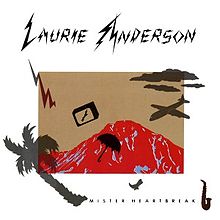With the recent release of Lishy Lou and Lucky Too, Lucky Diaz and the Family Jam Band continue their run of bright and poppy kids music for the 21st century.
And so, as often happens when I get these "How I Got Here" essays, I was a bit surprised when I got Diaz's recollection of discovering Are You Experienced by The Jimi Hendrix Experience -- was I expecting something shinier, I don't know. But I think one of the lessons I'm learning in doing these is that context is everything, and it doesn't take a lot for a piece of music to change your life.
**********
One of the most vivid days of my childhood -- I believe it was a crisp early evening 1989, and for California, about as Fall as it gets -- I was riding my bike home from a friend's house. In my back pocket was a Maxwell cassette tape (yes, I know let's all spare each other the- ‘man I'm so old comment’…) with the words "Are You Experienced" scribbled on it. My friend Ben had given it to me. He told me it was a guy named Jimi Hendrix and that I had to listen to him. Ben, already obsessed, had pilfered it from his father's pile of amazing cassettes and LP's which included Bob Dylan, Fleetwood Mac, and the Beatles, among other epic things I had no clue about yet.
At the time, I thought very little about the tape, and to be honest, it must have laid on my nightstand for a couple of days. At this point, I had been learning the guitar for about a year. I was obsessed with Chuck Berry, Stevie Ray Vaughn, Eric Clapton, and just about every guitar hero ever to roam the earth. Ironically, I was unaware of the greatest guitar slinger all. The man that defined the term.
I had heard the name Jimi Hendrix before, from my second cousin, April, who our family affectionately coined La Cuckoo. La Cuckoo was older than me by about ten or so years. As a young child, I remember her wearing a tie-dye shirt that sported Jimi Hendrix's iconic image. I once asked her who it was and she told me, Jim Hendrix. I said, "Who's that?" To which she replied, “One day he will blow your mind.”
My 8-year-old self had shrugged it off. I already didn't trust La Cuckoo. She once promised to make me a clown for Halloween. The memory of screaming my head off in horror as she spun me around to see myself in the mirror, only to discover that she instead painted me up to be Gene Simmons from KISS was still fresh. But I digress…
A few evenings later, I noticed the tape peeking out from under some comic books on my nightstand, and decided to finally give it a go. I put the tape in and pressed play. The intro to " The Wind Cries Mary" began…
La Cuckoo was right.
Mind blown.
Never had I heard the guitar in such an incredible way. A chorus of voices. A true voice. Never had I heard the guitar sing, scream, yearn and expose. The hammer ons, the bends, the technique. Nothing like it now, and nothing like it since.
Song after song, more and more. The first piece of art I HEARD. A masterpiece of Mitch Mitchell on drums, Noel Redding on bass (or Jimi depending on historical accounts). A trio, creating a cacophony of organized insanity. Motown, the Blues, Pop, Jazz -- all of it. THIS WAS A BAND! There, in one vacuum of madness.
I sat there for what must have been three days of a long weekend, coming downstairs only for food and water. In my room, analyzing every second of that cassette tape over and over, side after side. Grabbing my guitar, trying to replicating what I heard, failing miserably, loving every moment of it. When I finally came up for air, I went to my local music shop looking for a Fender Stratocaster of my own.
I never stopped listening to that cassette. I even packed the tape with me to take to music college.
I still am listening.
Never looking back, experienced.




















